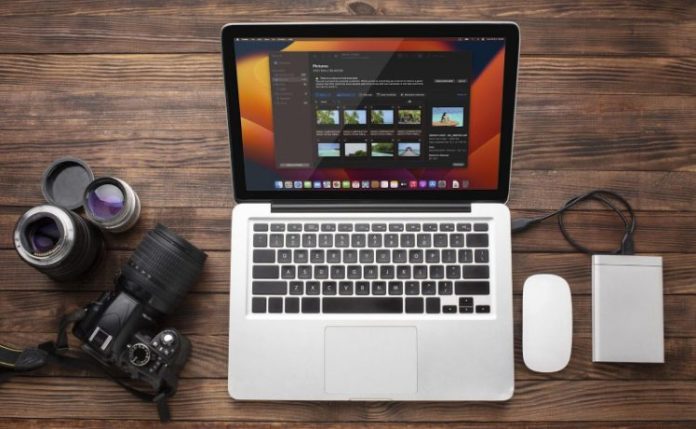USB flash drives have become an integral part of our daily lives, providing a convenient way to store and transfer data. However, sometimes files can disappear from a flash drive on a Mac, either due to accidental deletion or other reasons. In such cases, it is essential to know how to recover deleted files from a USB flash drive on a Mac.
Sometimes files can disappear from a flash drive on a Mac. So, the process of recovering deleted files from a USB flash drive on a Mac is known as USB recovery. USB recovery on Mac involves a set of steps that can help you retrieve lost or deleted files from your flash drive. In this article, we will guide you through the USB recovery process on macOS, step by step.
Reasons for Files Disappearing from Flash Drive on Mac
There can be several reasons why files disappear from a flash drive on a Mac. One of the most common reasons is accidental deletion. You may have deleted the files by mistake while trying to delete some other files. Another possible reason is file corruption. If the flash drive is infected with a virus or malware, it can corrupt the files and render them inaccessible.
Another possible reason for file disappearance is formatting. If you have accidentally formatted the flash drive, all the data on it will be erased. Power failure or an abrupt disconnection of the flash drive, while it is being used, can also cause data loss. Whatever the reason, it is essential to know how to recover deleted files from a USB flash drive on a Mac.
Steps to Recover Files from Flash Drive on Mac
Step 1: Stop Using the Flash Drive
The first step in recovering deleted files from a USB flash drive on a Mac is to stop using the flash drive immediately. This is because when a file is deleted, it is not actually removed from the flash drive. Instead, the space it occupies is marked as available for new data. If you continue to use the flash drive, there is a chance that the new data you write to it may overwrite the deleted files, making them unrecoverable.
So, the first thing you should do is stop using the flash drive and disconnect it from the Mac. This will help prevent further data loss and increase the chances of successful data recovery.
Step 2: Check the Trash Folder
The second step in recovering deleted files from a USB flash drive on a Mac is to check the Trash folder. When you delete a file on a Mac, it is moved to the Trash folder, where it remains until you empty the Trash. So, if you have recently deleted the files, there is a possibility that they are still in the Trash folder.
To check the Trash folder, connect the flash drive to your Mac and open the Trash folder. If you find the deleted files in the Trash folder, select them and click on “Put Back”. This will restore the files to their original location on the flash drive.
Step 3: Use Time Machine Backup
If you have enabled Time Machine backup on your Mac, you can use it to recover deleted files from your flash drive. Time Machine is a built-in backup feature in macOS that automatically backs up your data to an external hard drive or a network volume.
To use Time Machine backup to recover deleted files from your flash drive, connect the backup drive to your Mac and open Time Machine. Browse through the backups and locate the files you want to recover. Select the files and click on “Restore”. This will restore the files to their original location on the flash drive.
Step 4: Use a Data Recovery Software for Mac
If the above steps do not help you recover the deleted files, you can use a data recovery software for Mac. There are several data recovery software available for macOS that can help you recover lost or deleted files from your flash drive.
To use a data recovery software for Mac, connect the flash drive to your Mac and install the software. Launch the software and select the flash drive as the target device. Scan the flash drive for deleted files and preview the files that can be recovered. Select the files you want to recover and click on “Recover”. This will save the recovered files to your Mac.
Recommended Data Recovery Software for Mac
There are several data recovery software available for Mac, but not all of them are reliable. We recommend using Disk Drill, a powerful data recovery software for macOS. Disk Drill is easy to use and can recover deleted files from various storage devices, including USB flash drives.
Disk Drill offers a free version that allows you to preview the recovered files before purchasing the full version. The full version of Disk Drill offers advanced features like deep scan, data protection, and data backup.
Tips on Preventing Data Loss on Mac
Prevention is always better than cure. Here are some tips to help you prevent data loss on your Mac:
- Use reliable antivirus software to protect your Mac from viruses and malware.
- Avoid abrupt disconnection of the flash drive while it is being used.
- Always eject the flash drive before disconnecting it from the Mac.
- Regularly back up your data using Time Machine or any other backup software.
- Store your data on multiple devices to avoid complete data loss.
Conclusion: The Importance of Regular Backups and Data Recovery
In conclusion, recovering deleted files from a USB flash drive on a Mac is a simple process if you follow the right steps. The USB recovery process on macOS involves stopping the use of the flash drive, checking the Trash folder, using Time Machine backup, and using a data recovery software for Mac.
We recommend using Disk Drill, a reliable data recovery software for macOS. Remember to take preventive measures to avoid data loss, such as using antivirus software, ejecting flash drives before disconnecting them, and regular backups.
Regular backups and data recovery are essential for protecting your important data from loss. Following the steps outlined in this article, you can recover deleted files from your USB flash drive on your Mac and keep your data safe.




























